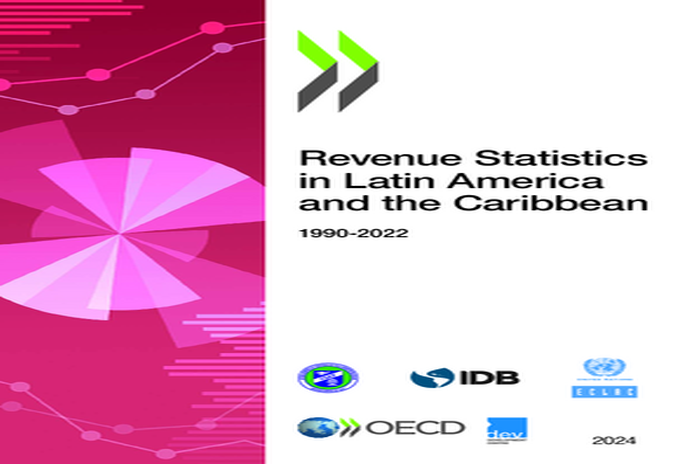SANTIAGO, Chile – Tax revenue rose as a share of GDP on average across Latin America and the Caribbean countries between 2021 and 2022 due partly to a sharp increase in revenue from the oil and gas sector, according to a new report.
Revenue Statistics in Latin America and the Caribbean 2024, released today at the 36th Regional Fiscal Seminar in Santiago, Chile, shows that the average tax-to-GDP ratio in the region rose by 0.3 percentage points (p.p.) in 2022 to 21.5 percent. This was slightly below its level prior to the COVID-19 pandemic (21.6% in 2019) and below the average tax-to-GDP ratio for OECD countries (34.0% of GDP). Tax-to-GDP ratios in the LAC region ranged from 10.6 percent in Guyana to 33.3 percent in Brazil in 2022.
The tax-to-GDP ratio rose in 20 countries in the region between 2021 and 2022 and declined in six countries. The largest increases were observed in Chile (up 1.7 percentage points from the previous year), The Bahamas (1.6 percentage points) and Ecuador (1.5 percentage points). The largest decrease (of 6.3 percentage points) occurred in Guyana, which was one of four Caribbean countries in the report where the increase in tax revenue was outpaced by GDP growth, causing the tax-to-GDP ratio to decline.
The increase in Latin America and the Caribbean’s average tax-to-GDP ratio in 2022 was driven by revenue from corporate income tax (CIT), which rose by 0.6 p.p. from the previous year. The increase in CIT was particularly strong among the 10 major hydrocarbon producers included in the report, which benefited from higher profits derived from a surge in oil and gas prices in 2021 and 2022.
Hydrocarbon-related tax and non-tax revenue in major oil and gas producers rose to 4.4 percent of GDP on average in 2022 from 2.6 percent of GDP in 2021, before declining to an estimated 3.9 percent of GDP in 2023 as oil and gas prices trended down. Revenue from minerals rose to 0.75 percent of GDP in 2022 before declining to an estimated 0.5 percent of GDP in 2023.
Revenue from other tax types were either unchanged or declined as a share of GDP on average across the region in 2022. Notably, revenue from taxes on goods and services declined by 0.3 p.p. on average due to a fall in revenue from excises amounting to 0.4 p.p. caused partly by tax measures to mitigate the impact of high energy prices.
In 2022, taxes on goods and services generated almost half of total tax revenue in the region, compared with less than a third in the OECD (31.9% in 2021, the latest year available). On average, CIT and personal income tax accounted for 18.8 and 9.2 percent respectively of total tax revenue, compared with 10.2 and 23.7 percent in the OECD (2021 figures).
Revenue Statistics in Latin America and the Caribbean 2024 is a joint publication by the Inter-American Center of Tax Administrations (CIAT), the Inter-American Development Bank (IDB), the United Nations Economic Commission for Latin America and the Caribbean (UN-ECLAC), the Organisation for Economic Co-operation and Development (OECD) Centre for Tax Policy and Administration and the OECD Development Centre.
To access the report, data, overview, country notes and infographics go to http://oe.cd/revstatslac






